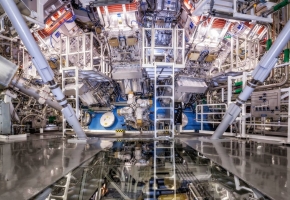Russia Joined the Paris Agreement

A chunk of ice collapses at Perito Moreno Glacier in Argentinian Patagonia. Picture: Alamy
Russia, the world’s fourth-biggest greenhouse gas emitter, has officially joined the Paris climate agreement, which it signed in 2016.
In its most recent annual climate report, the national weather service said the average temperature in Russia has been increasing by 0.47 degrees Celsius every 10 years between 1976 and 2018 – 150% faster than globally.
A paper published last year by the Russian economist Igor Makarov and two collaborators from the Massachusetts Institute of Technology estimated that if all countries perform according to their goals set under the Paris accord, Russia’s growth will slow by 0.2 percentage points to 0.3 percentage points a year.
Given how little the Paris Accord actually requires countries to do (they’re allowed to determine their own contributions based on the goal of keeping global warming to 1.5 degrees by the end of this century), Russia doesn’t really have to worry about implementation costs.
When it signed the agreement, it promised to keep greenhouse gas emissions to 75% of the 1990 level. That target is easy to meet, after the collapse of Soviet industry in the 1990s. Indeed, on CO2 emissions, Russia is doing better than Germany, not to mention the three bigger emitters – China, India and the U.S.







